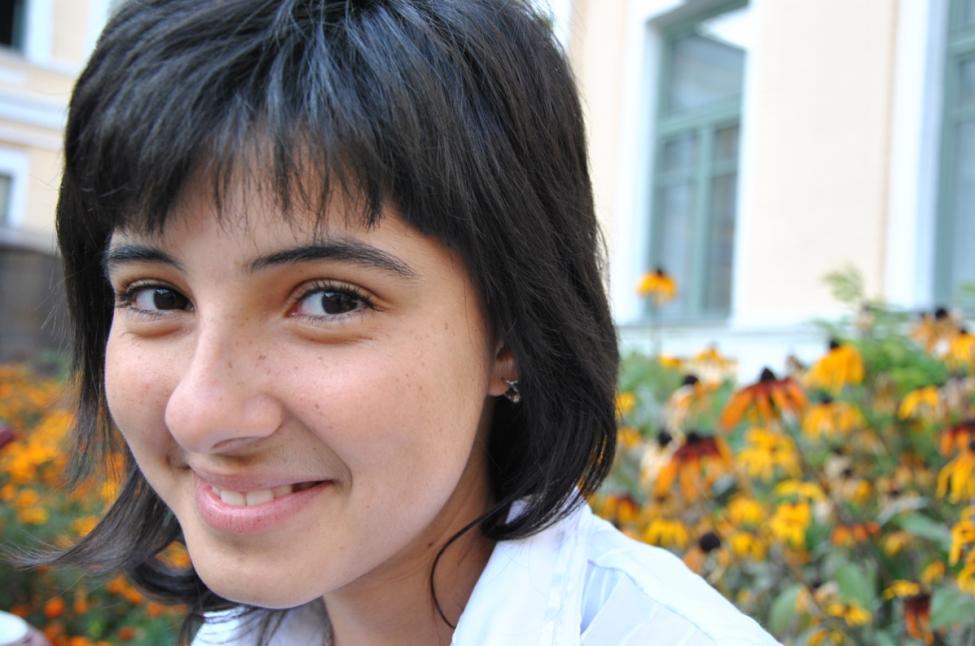-
Про МОМ
Про МОММіжнародна організація з міграції (МОМ) є частиною системи ООН як провідна міжурядова організація, що підтримує гуманну та впорядковану міграцію для загального блага. МОМ працює в Україні з 1996 року.
Про нас
Про нас
МОМ у світі
МОМ у світі
-
Наша діяльність
Наша діяльністьЯк провідна міжурядова організація, що підтримує гуманну та впорядковану міграцію для загального блага, МОМ грає ключову роль у досягненні Цілей сталого розвитку, працюючи у різних сферах, які поєднують гуманітарну допомогу та сталий розвиток. В Україні МОМ підтримує мігрантів шляхом різноманітних заходів із переселення, підтримки та захисту.
- Дані та ресурси
- Як долучитися
- 2030 Agenda
* Вміст доступний лише англійською мовою
3D is known from cinema as a visual effect that allows spectators to feel as if they were part of a story and experience it together with the heroes. But do we feel that immigrants are present in our lives? Do we feel like we are living together with them in one country?
Usually, the presence of immigrants is limited to ordinary questions such as “Where are you from?” and “Why are you here?” that have sometimes been the precursors of violent attacks in Ukraine, accompanied by shouts of “Go home!” and “Ukraine for Ukrainians!”
Within the project, funded by the Bureau of Democracy, Human Rights and Labour of the US Department of State, and aiming to combat xenophobia and racism in Ukraine and Russia, IOM had put these questions to a more constructive use in a booklet and a theatre performance “At Home in Ukraine”. The purpose of the project is to provide an insight into the hopes, dreams, fears and experiences of representatives of migrant and ethnic minority communities living in various regions of Ukraine. IOM gives Ukrainians an opportunity not just to read migrants’ stories, but to experience their lives. This “3D” model of knowing thoughts, words and deeds can foster trust to immigrants, enabling them to be a part of Ukrainian society.
Theodoryna and Elzara are among the heroes of the IOM project. Their life stories were included in the booklet. They also volunteered to be amateur actors on the theatre performance that enables the audience to experience migrant stories through the medium of art.
Elzara is a Crimean Tatar whose parents returned to Crimea from Uzbekistan, where they had been deported during the Soviet Union. “Although I was born in Tashkent, my motherland is Ukraine, in particular Crimea”, she says. Elzara is an active member of the Kyiv Tolerance Club under Congress of the National Minorities of Ukraine and had participated in various events to promote the idea of open dialogue with different cultures among youth. “I love working with kids,” says the girl. “Adults often have preconceptions and biases which can hinder communication between different nationalities. Sometimes they find it difficult to explain why they are unable to find a common language with those who belong to other cultures and nations.”
Theodoryna’s father is a Chadian national, while her mother is Ukrainian. The girl was born in France, where her father was studying. Later, they moved to the village of her grandparents in Ukraine. Theodoryna actively works in a non-governmental organization “The African Council of Ukraine”, organizing many cultural events and being a “book” within the Living Library projects, an interactive event that puts a human face on the idea of multiculturalism through starting conversations between people from different backgrounds. Its model was adapted by the IOM Mission in Ukraine in 2007.
IOM takes an active role in promoting cultural diversity in Ukraine, as migrants are able to contribute their wealth of knowledge, ideas and experiences, only when the society accepts them. This is most successfully achieved by working with the youth and relating the message in a dynamic way. Through art, music, cinema, the Internet and interactive events, the IOM invites the next generation of Ukrainian men and women to see past stereotypes and experience the benefits of cultural diversity for themselves.

